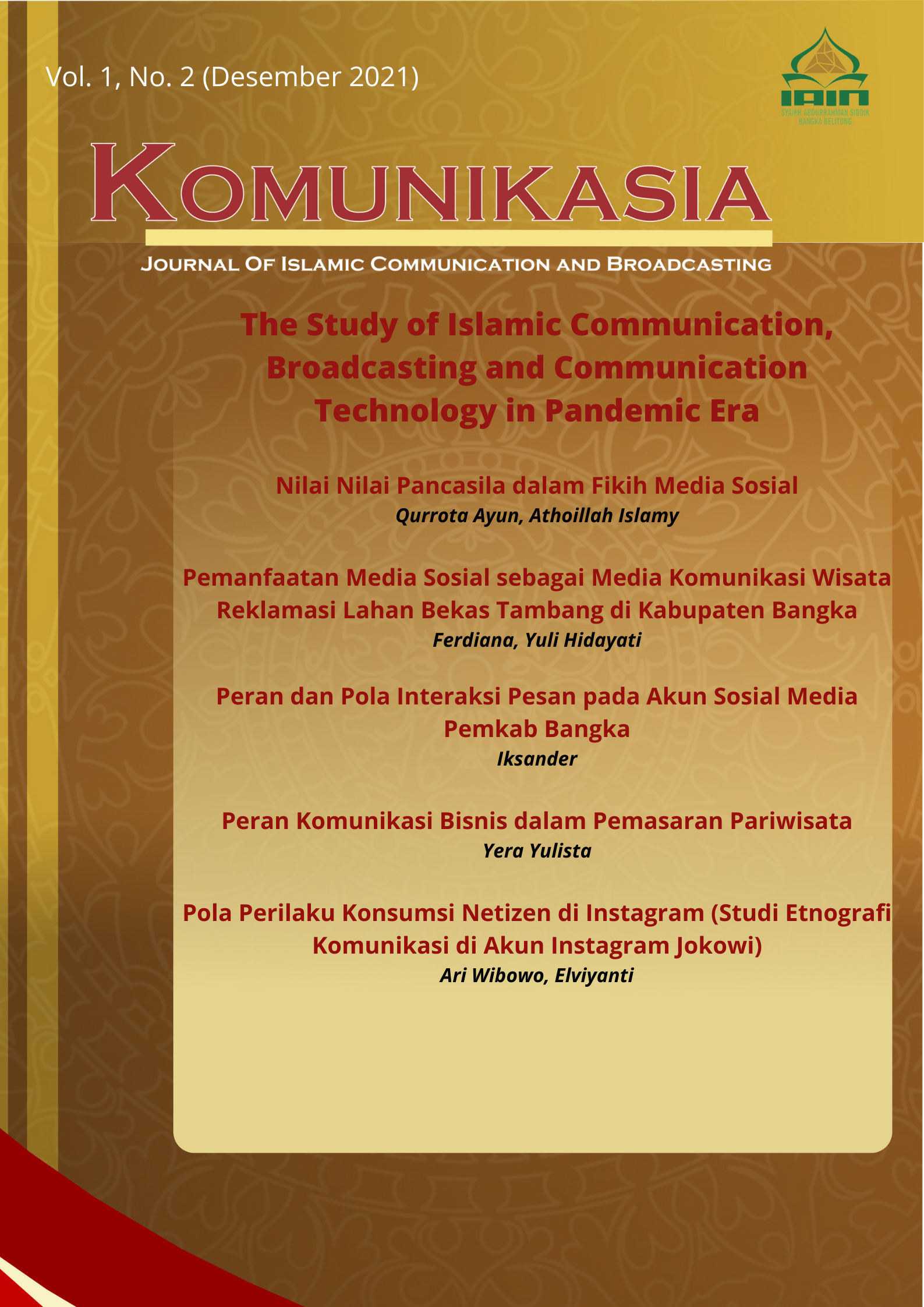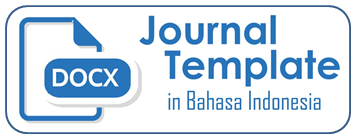PEMANFAATAN MEDIA SOSIAL SEBAGAI MEDIA KOMUNIKASI WISATA REKLAMASI LAHAN BEKAS TAMBANG DI KABUPATEN BANGKA
DOI:
https://doi.org/10.32923/kpi.v1i2.1959Keywords:
Social Media, Communication, TourismAbstract
The condition of the ex-tin mine excavated land greatly affects environmental conditions because it destroys the ecosystem. The reclamation efforts carried out by PT. Timah, Tbk in the form of new tours in the form of reclamation tours of ex-mining land, namely is Kampung Reklamasi Air Jangkang Merawang and Perkebunan Air Nyatoh. This new tour needs to be disseminated in order to provide an understanding for the community about the use of ex-mining land. So social media is one of the most effective and efficient media to do this. This study is a qualitative research with a descriptive approach that will explain the use of social media as a communication medium for tourism reclamation of ex-mining land in Bangka Regency. The results of the study found that the social media used by PT. Timah, Tbk in the communication of ex-mining land reclamation tourism in Bangka Regency included YouTube, Facebook, Instagram, Twitter and online news portals. The most dominant social media used is the Facebook account of PT. Timah, Tbk. PT. Timah, Tbk utilizes social media to communicate the application of the 4 E concept; Education, Ecology, Environment, Economy.
Downloads
Published
Issue
Section
License
Copyright Notice
Komunikasia: Journal of Islamic Broadcasting and Communication is under the Creative Commons Attribution 4.0 International (CC-BY 4.0) License, according to which:
1) Authors retain copyright and grant the journal the right to first publication, with the work simultaneously licensed under the Creative Commons Attribution (CC-BY 4.0) that allows the sharing of articles published with the acknowledgment of authorship and the initial publication in this journal.
2) The authors are authorized to make additional contracts separately for distribution of the version of the work published in this journal (for example, publication in an institutional repository or as a chapter of the book), as long as there is recognition of authorship and initial publication in this journal.
3) Authors are authorized and encouraged to publish and distribute their work online (for example, in institutional repositories or on their personal pages) at any time before or during the editorial process, as it increases the impact and reference of the published work.



















